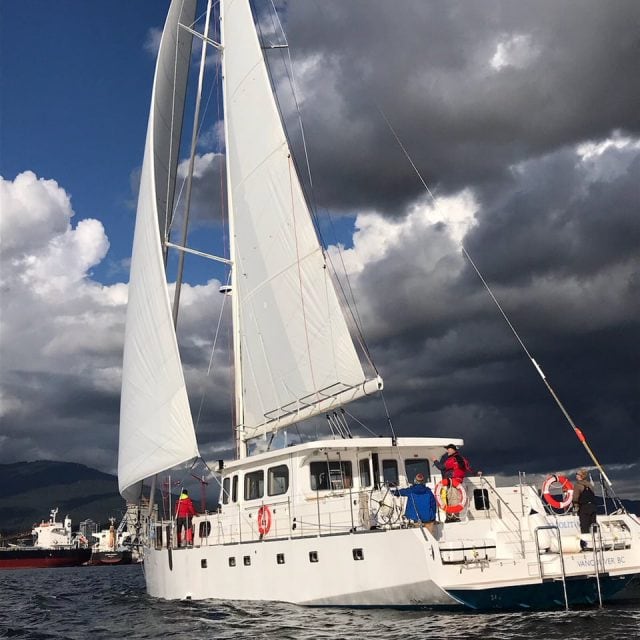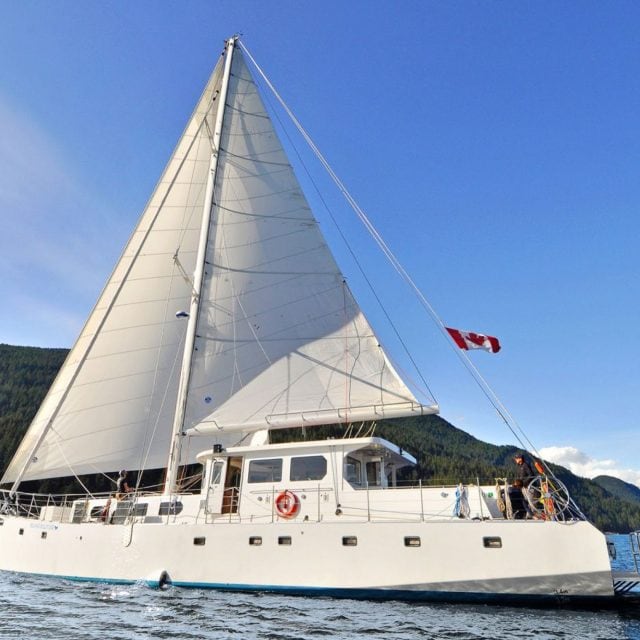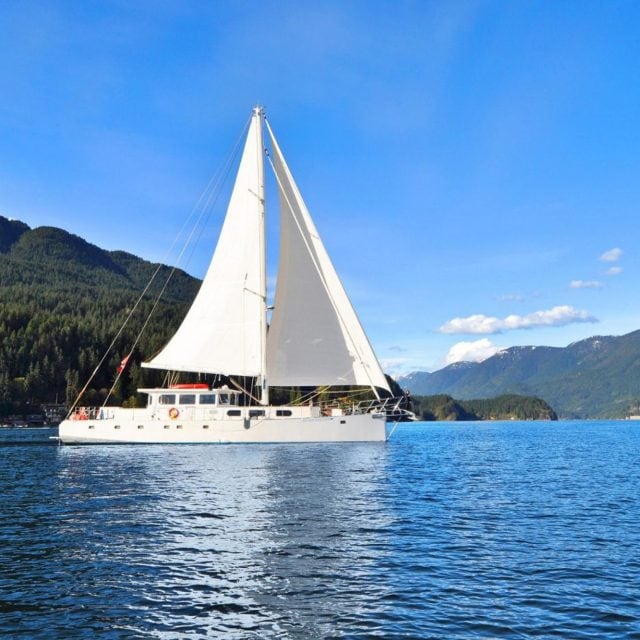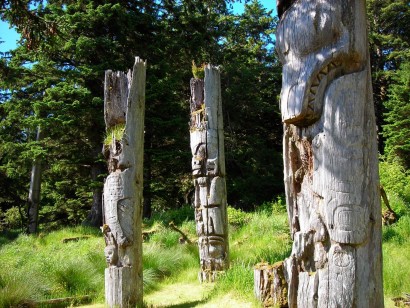Whales & Totems Sailing
- Upcoming Departures:
- Oct 15 - 19, 2026
Highlights
Highlights
- Spectacular killer whale / orca watching
- Other marine mammal species including sea lions, seals, porpoise, and humpbacks
- Lots of bald eagles and beautiful scenery
Map
Map
Overview
Tour Overview
At the northern end of Vancouver Island lies a protected maze of islands and waterways; full of wildlife, beautiful scenery, and the history and traditions of the Kwakwaka’wakw people. Kwakwaka’wakw is the collective name for all people who speak the language Kwak’wala, including the ‘Namgis, Kwakiutl, Mamalilikulla, Da’naxda’xw, and many other Nations who have lived on the northern part of Vancouver Island, the adjacent mainland, and the islands in between for at least nine thousand years.
The Pacific Ocean funnels into the protected waters of Johnstone Strait creating strong tidal currents and incredibly nutrient-rich waters. Millions of salmon, returning to spawn in the mainland rivers, must converge to pass through Johnstone Strait. Unsurprisingly, this convergence attracts a variety of marine mammal species – including sea lions, seals, porpoise, and Orca (killer whales). As a core foraging area, Johnstone Strait is considered by researchers as one of the best places in the world to see Orca. In addition, we expect to see humpback whales, and a large variety of bird and plant species during the expedition as we cruise the secluded islands of Broughton Archipelago Marine Provincial Park.
We are grateful for the opportunity to work closely with local partners that assist us in providing a unique and memorable travel experience in a very remote area. Small ship travel through this unforgettable landscape allows us to voyage to places not accessible by land.
Departures & Cabins
DEPARTURES & CABINS
More dates may be available than those listed - contact us for more information.
Deck Plan

Deck Plan


Deck Plan

What's Included
What's Included
Tour Price Includes
- All meals from lunch on Day 1 to breakfast on the last day
- All accommodation onboard ship; skipper, cook, naturalist;
- Full use of all onboard facilities, including kayaks.
Tour Price Does Not Include
- Transportation to the start point and from the finish point of the trip
- Accommodation or meals prior to the start of the trip or after the completion
- Travel or cancellation insurance
- Airport transfers
- $200 CAD Sustainability fee
- Taxes (5% GST)
- The only money participants require during the trip is for optional purchases and gratuities for the crew.
Gallery
Gallery

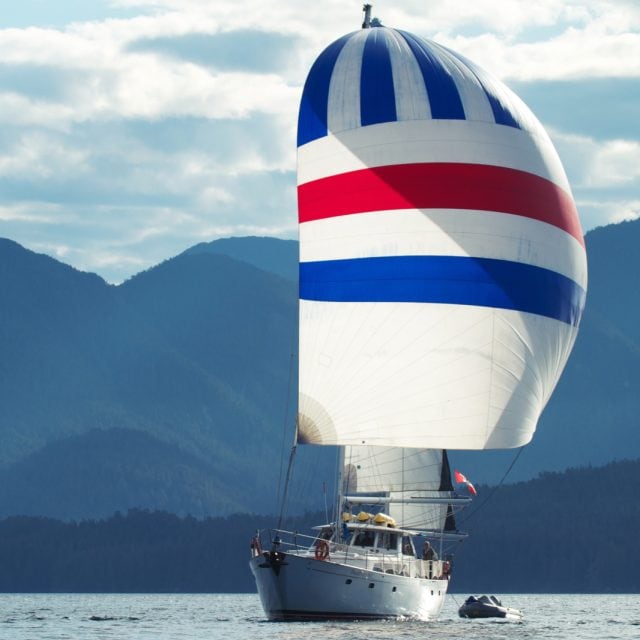






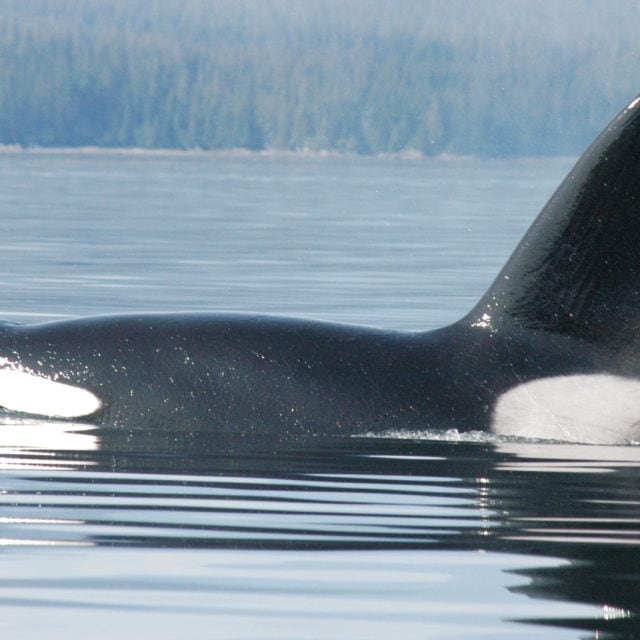


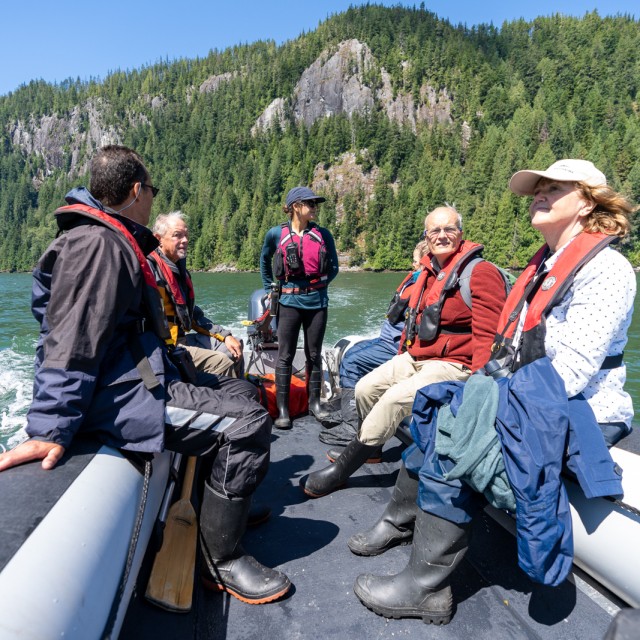




Itinerary
Itinerary
Day 0: Arrival Port McNeill
We highly recommend arriving the day prior to the tour start and staying overnight at accommodation of your choice in either Port McNeill or Port Hardy. This ensures the group departs on time as there can be unforeseen weather delays when travelling in coastal regions.
The Port Hardy airport is the closest airport to Port McNeill for those flying in from Vancouver. From the Port Hardy airport, it is about a 35-minute taxi ride to Port McNeill.
For those who wish to drive from Nanaimo or Victoria, it is approximately a 4-hour drive from Nanaimo’s Departure Bay ferry terminal, or a 5.5-hour drive from Victoria’s Swartz Bay ferry terminal, which will take you through Campbell River and some beautiful parts of Vancouver Island.
Day 1: Embarkation, Port McNeill
This tour starts and finishes in Port McNeill, BC. Guests will be met by crew in the morning at the top of North Island Marina. Upon boarding the vessel, cabins will be assigned, and an introductory safety briefing will be completed.
From Port McNeill, we quickly escape from civilization into a land of old growth forests, rugged archipelagos, cozy anchorages, and amazing wildlife.
There will be plenty of time to explore the protected waters using our stable sea-kayaks – the perfect way to start or finish the day. Each night we anchor in a different, secluded anchorage. During our daily shore or small boat excursions our onboard naturalist will help identify different coastal plants, animals, birds, and marine life. Interested participants can help keep a species list for the tour.

Days 2-4: Johnstone Strait, Blackfish Sound, Queen Charlotte Strait
Our focus these days will be on the waters of Johnstone Strait, Blackfish Sound, and Queen Charlotte Strait where we hope to encounter whales. Two species of Orca can be spotted in these waters: Northern Resident Orca which eat salmon, and Bigg’s (transient) Orca which hunt marine mammals. In addition, keep watch for the larger blow of a humpback whale – their population has made a significant comeback to these waters during the last decade, and they are known to feed well into fall on the BC coast before their migration south.
If we’re lucky, we may see some exciting behaviours, such as foraging, spy-hopping, and breaching (leaping clear of the water). Guests will learn about the behaviour of these fascinating creatures, learn how to identify individual animals, and potentially listen to them calling on the ship’s underwater microphone.
Walks in the coastal temperate rainforest provide opportunities to witness how giant British Columbia’s coastal trees can get! The coastal forest ecosystems are busy and productive with many species to investigate. With a good low tide, we can also search the shoreline for colourful sea stars, sea anemones, and other intertidal life. Although we mostly travel in protected waters, we hope for a steady wind to raise the sails and enjoy the silence and serenity of nature.
We will spend time navigating the labyrinth of undeveloped islands of the Broughton Archipelago Marine Provincial Park, exploring for different species of marine mammals, exploring remote beaches, and observing a variety of sea bird species, such as rhinoceros auklets, black oyster catchers, pigeon guillemots, glaucous-winged gulls, harlequin ducks, bald eagles, and many others. The Broughton Archipelago is home to Steller sea lions – an inquisitive species that are expert, deep-water predators with lively haul-outs. These large pinnipeds feed opportunistically on a wide variety of fish and cephalopod species.
We will visit the modern Kwakwaka’wakw community of Alert Bay to visit the U’Mista Cultural Centre to explore the art and culture of the Kwakwaka’wakw people. A feature of the U’mista Cultural Centre’s display is the impressive “Potlatch Collection” featuring masks and regalia which were confiscated in 1921. The potlatch was banned in Canada between 1885 and 1951, and the Kwakwaka’wakw people fought for decades for the return of these sacred items. U’Mista means “the return of something important”.
At the entrance to Knight Inlet lies the abandoned Mamalilikulla village of ‘Mimkwamlis. Located on Village Island, ‘Mimkwamlis means “village with rocks and island out front”. Historically the main winter village for the Nation and the location of the Mamalilikulla creation story, the village was occupied until 1972 when the effects of colonization eventually pushed its residents away. Time permitting and with permission from the Mamalilikulla Nation, we may explore this village site to discover evidence of an ancient and rich heritage.

Day 5: Trip Finish, Port McNeill
We return to Port McNeill late morning to complete our voyage. Guests can plan to catch afternoon flights departing from Port Hardy back to Vancouver.
You may wish to extend your visit to Northern Vancouver Island and explore the local area. Port McNeill is ideally situated with ferry access to Sointula and Alert Bay. Sointula, meaning “harmony” in Finnish, was established at the turn of the century by Finnish pioneers with a utopian dream. During our voyage we will be visiting the U’Mista Cultural Centre in Alert Bay; however, some may find it worth the extra visit. There is a lovely boardwalk trail around a bog where you can enjoy interesting vegetation, bird watching, and photography. Locals refer to it as ‘Gator Gardens’ – however, the name doesn’t do it justice.
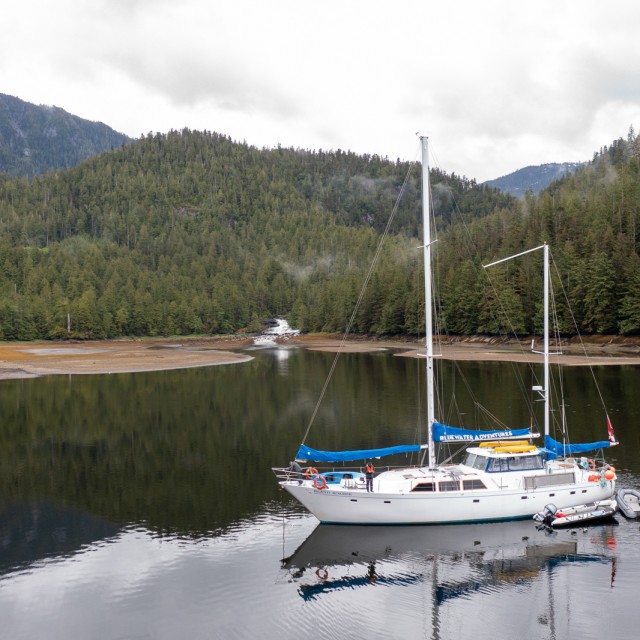
What to Expect
What to Expect
On our British Columbia Orcas and Grizzlies sailing tour, as in all of our destinations, our itineraries remain flexible. This allows the crew to take time to enjoy wildlife sightings, spend more time at an ancient village site, or simply cater to the interests of the group.
This is a general natural history expedition rather than a dedicated birding tour. Travellers can look forward to a mix of wildlife viewing and time to appreciate the region’s incredible scenery — with opportunities for birding included along the way.
Usually on the Pacific Coast we have a good variety of constantly changing weather. Expect a mixture of sunshine, rain and wind on most trips. You will require waterproof rain gear and rubberboots as most of our landings will be wet, where you will be stepping into the water and onto the beach.
We travel in protected areas most of the time. On many days of the summer this coast is like sailing on a lake – flat and calm. Sometimes we cross into open water for short periods of time where we may experience greater motion. If you are prone to motion sickness it is a good idea to bring sea sickness medication. Check with your doctor.
All of our meals are served buffet style. We can usually accommodate most special dietary concerns if we are given sufficient advance notice.
Ship & Deck Plan
Ship & Deck Plan: Island Solitude
Island Solitude
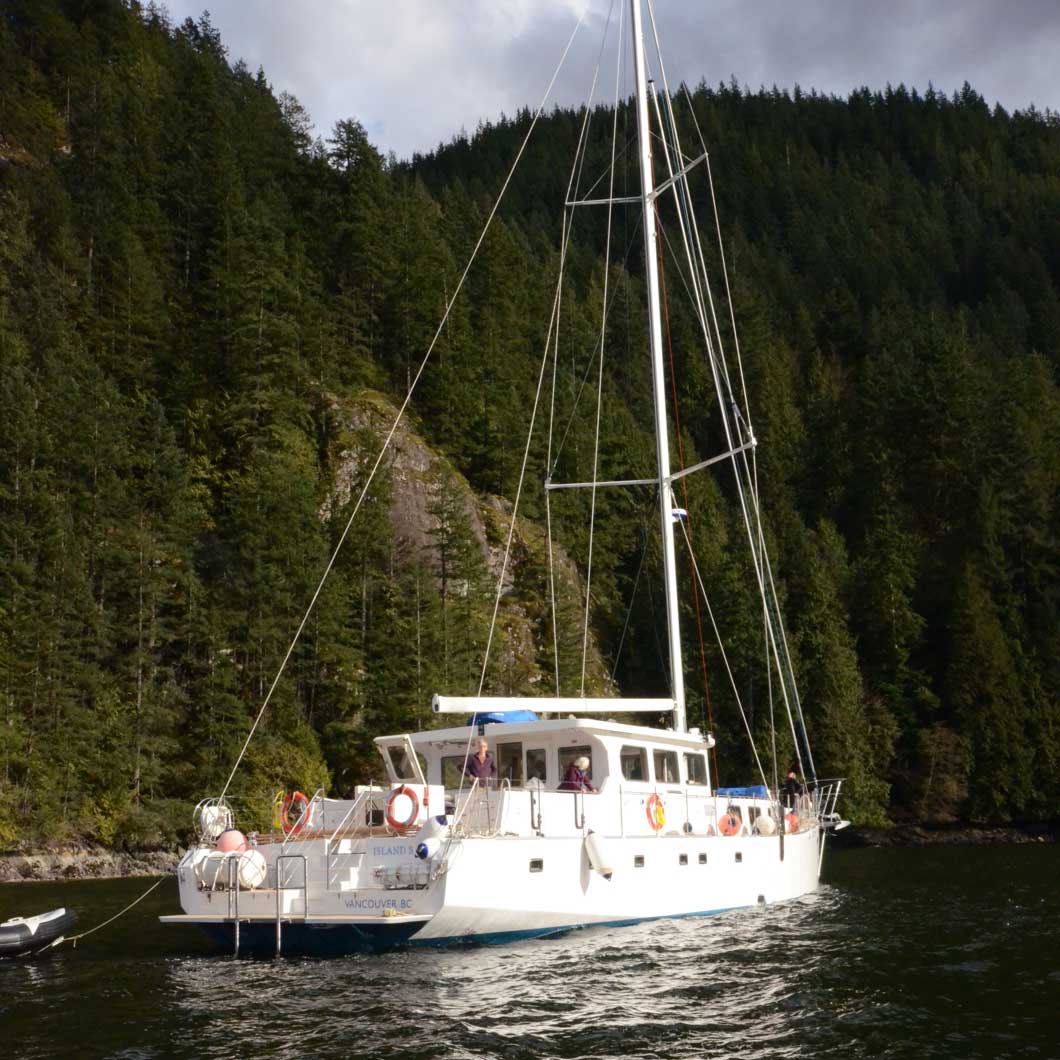
The newly built, SV Island Solitude is 82′ long and accommodates twelve guests in six cabins. Each is furnished with two lower berths and a private ensuite bathroom, complete with a hot shower. The spacious wheelhouse, located on the main deck, accommodates the entire group during meal time where guests will enjoy healthy and deliciously prepared food surrounded by 360-degree views.
Built on the British Columbia coast with the environment in mind, the engines exceed EPA emission standards. Designed specifically for expedition travel, Island Solitude provides elegance and comfort in while exploring some of the most remote and beautiful coastal areas.
There is plenty of space on deck for wildlife watching with 2 zodiacs for daily shore excursions and 5 stable sea kayaks for guests to use whenever the vessel is at anchor.
Learn MoreFrequently Asked Questions
Frequently Asked Questions
Featured Wildlife
Featured Wildlife
While we cannot guarantee sightings of the birds or mammals listed below, we believe that encountering these species is quite likely during this tour.
- Orca (Killer Whale)
- Humpback Whale
- Bald Eagle
- Black Oystercatcher
- American Dipper
- Chestnut-backed Chickadee
- Pigeon guillemots
- Rhinoceros auklets
